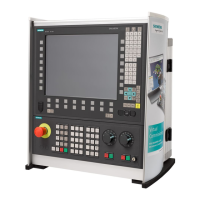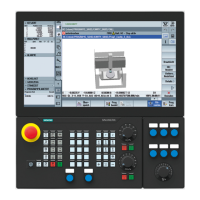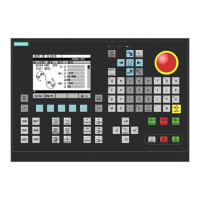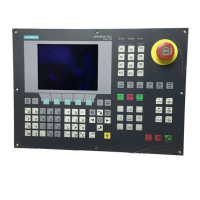Detailed Description
2.4 Referencing with incremental measurement systems
Reference Point Approach (R1)
Function Manual, 08/2005 Edition, 6FC5397-0BP10-0BA0
2-11
Phase 2: Sequence
In Phase 2, there are two cases, depending on the assigned synchronization method:
MD34050 $MA_REFP_SEARCH_MARKER_REVERSE (direction reversal on reference
cam):
1. Synchronization with falling reference cam edge:
MD34050 $MA_REFP_SEARCH_MARKER_REVERSE = 0
2. Synchronization with rising reference cam edge:
MD34050 $MA_REFP_SEARCH_MARKER_REVERSE = 1
Note
If, while approaching the reference cam, the actual velocity of the machine axis does not
reach the set velocity of Phase 2 within the assigned tolerance limits:
MD35150 $MA_SPIND_DES_VELO_TOL (spindle speed tolerance)
Phase 1 is started over again.
This will be the case, for example, if the machine axes are positioned at the reference
cam when reference point approach starts.
Case 1: Synchronization with falling reference cam signal edge
During synchronization with falling reference cam edge, the machine axis accelerates to the
assigned reference point creep velocity:
MD34040 $MA_REFP_VELO_SEARCH_MARKER (reference point creep velocity)
along the assigned reference point approach direction (traversing direction of Phase 1):
MD34010 $MA_REFP_CAM_DIR_IS_MINUS (approach reference point in minus direction).
After the reference cam is exited:
DB31, ... DBX12.7 (deceleration of reference point approach) = 0,
the machine axis waits for the next encoder zero mark.
As soon as the encoder zero mark is detected, Phase 2 comes to an end. The machine axis
continues at constant velocity and reference point approach is continued with phase 3.
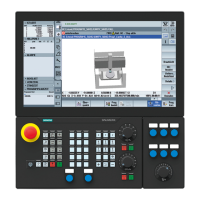
